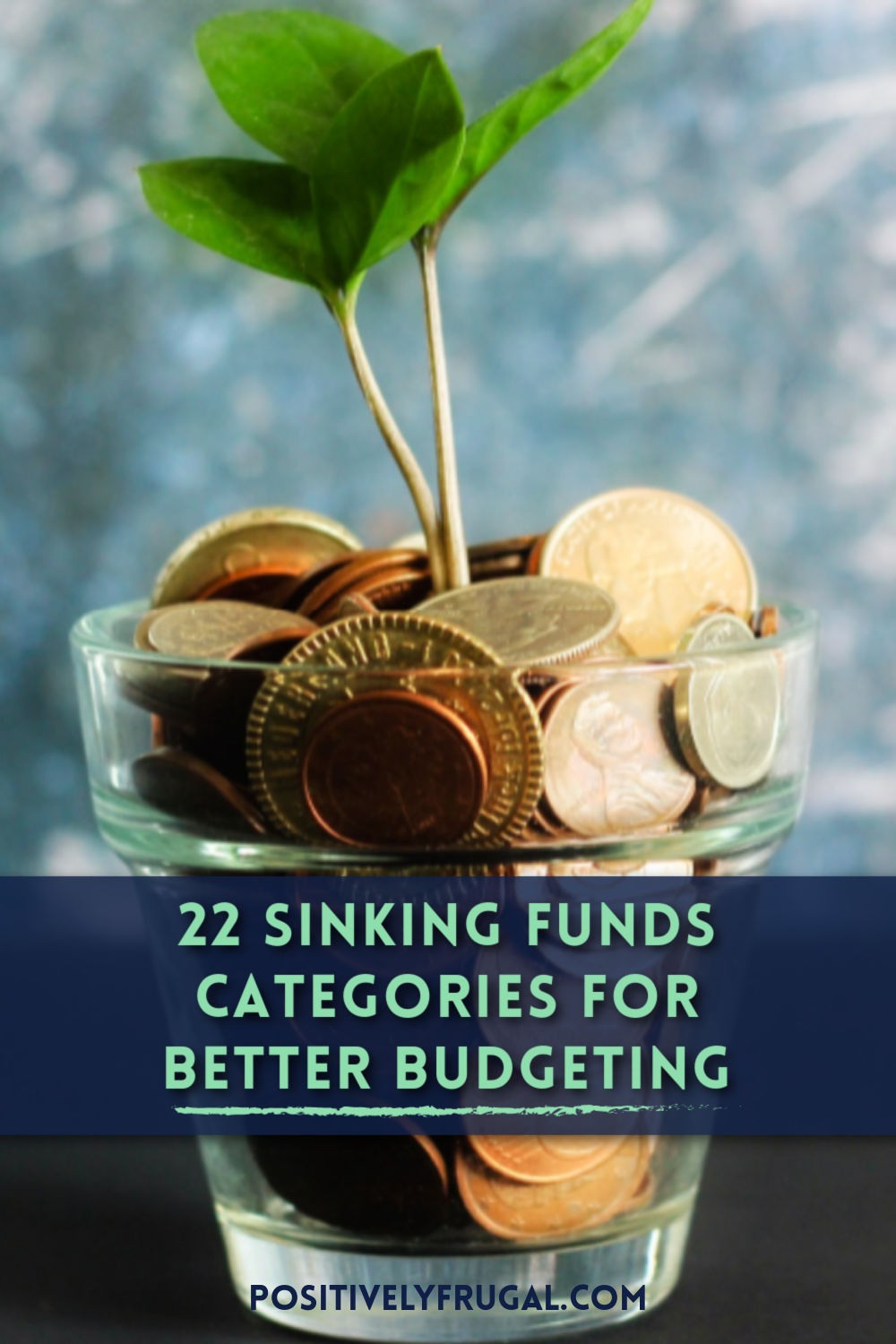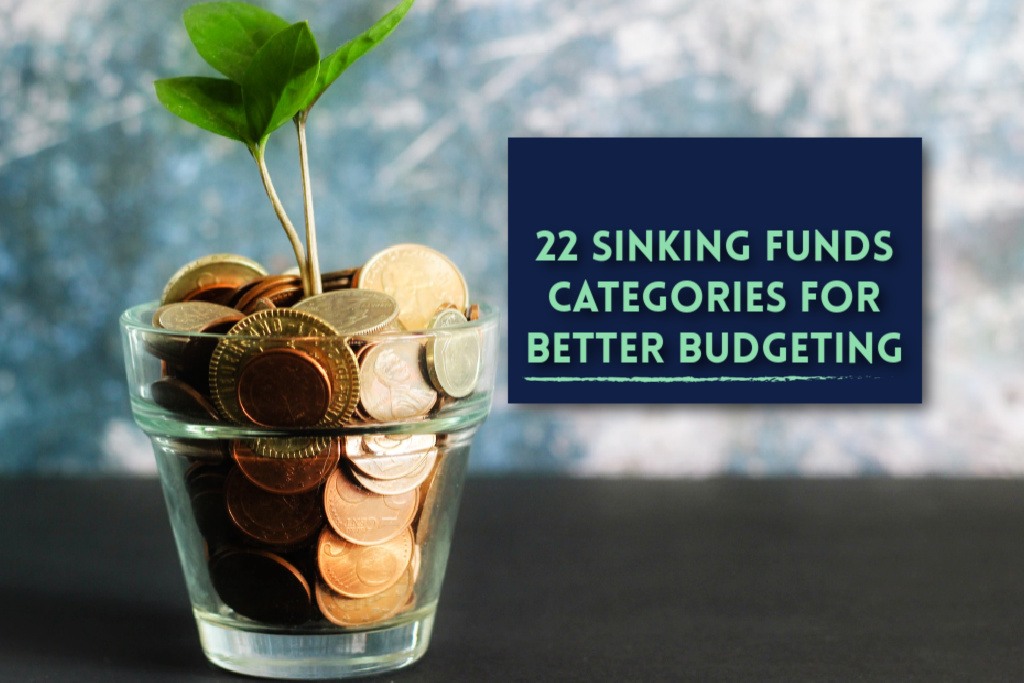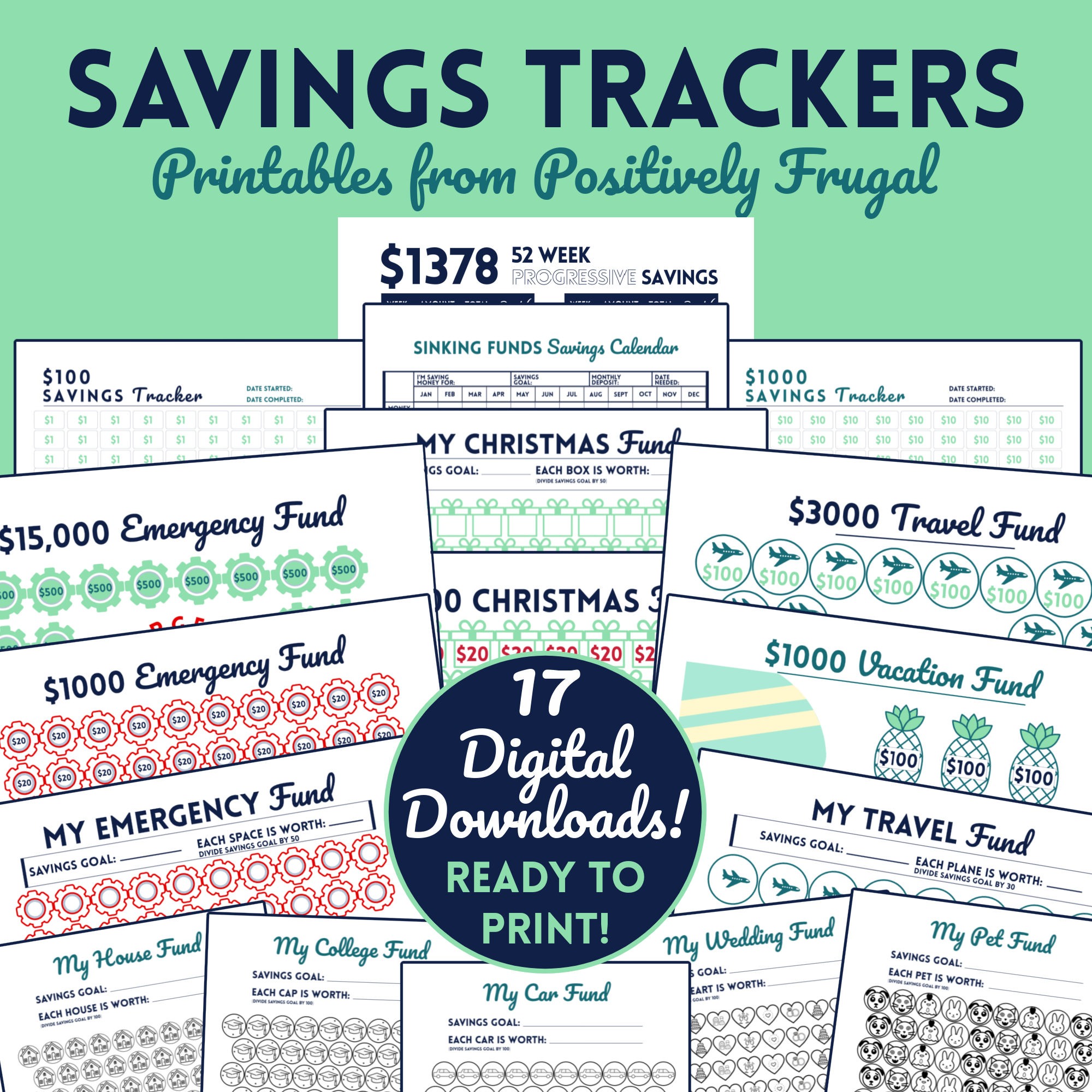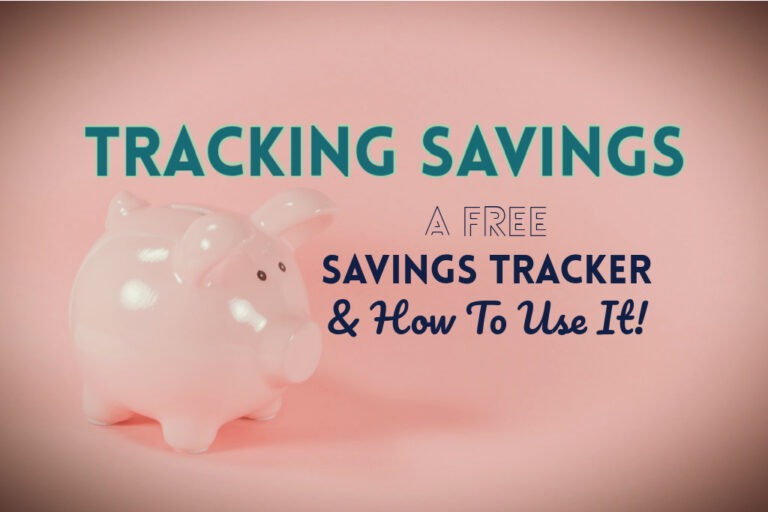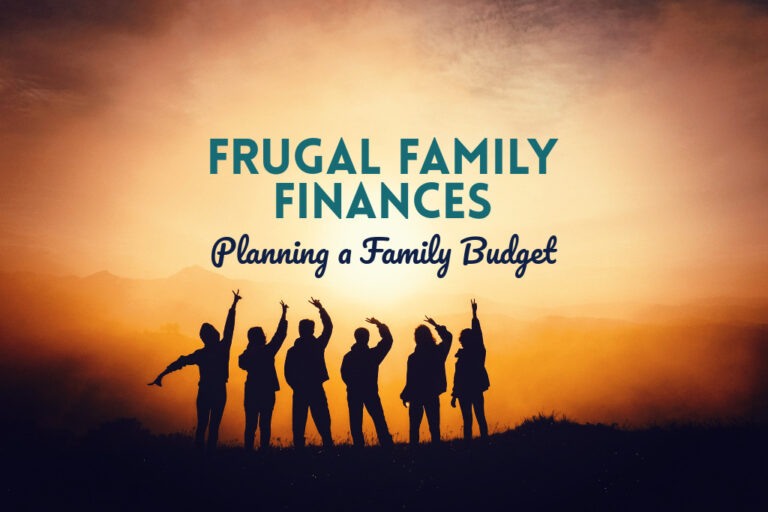Some of the links on this site are Affiliate Links and if you use them to make a purchase, we may earn a commission. For more information, read our Disclosure Policy.
Sinking Funds and Budgeting go hand in hand. While you can create a financial plan where they stand alone, just like peanut butter and jelly, they are so much better together. By including your Sinking Funds categories in your budget, you will keep a laser-like focus on your finance goals, which will help you to ultimately achieve success.
What Is the Purpose of a Sinking Fund?
The purpose of Sinking Funds is to save money with intention. Sinking Funds are extremely goal oriented. Rather than just saving, you are saving for something specific.
An excellent example of a Sinking Fund is a Vacation Fund. Rather than going into debt for the trip, you save up for the vacation – and it is paid off before you even take off.
With a dedicated Sinking Funds account and intentional saving, you have cash for the things that you need and want. You won’t need to rack up a credit card bill and worry about how you will pay it off. You get ahead of the game.
How you make Sinkings Funds work is by adding each Sinking Fund category as a line item in your budget. You budget and save for the expense over time.
Need to better understand Sinking Funds? Start from the beginning with my blog post, What Are Sinking Funds?, where I explain Sinking Funds in more detail!
What Is the Purpose of a Budget?
The purpose of a budget is to help you spend money intentionally. A budget will clearly show you what money is coming in and what money is going out – and exactly what your money is being spent on.
Your budget is your blueprint to spending. By including Sinking Funds categories in your budget, you create a plan that leads to financial success.
New to budgeting? Don’t worry, I will help walk you through the process! Learn How To Make a Budget – in just 3 easy step!
How Do Sinking Funds Help Me Budget Better?
Your budget is your plan for how to spend your money. Your monthly expenditures are expected and balanced.
But what about non-monthly expenses – like a Vacation? When the item you are saving for is not a typical monthly expenditure – like a Vacation Sinking Fund – how do you budget it?
You budget for it with Sinking Funds.
With Sinking Funds, you save for things in advance and have the cash to pay for them when you finally make the purchase.
By writing your Sinking Fund categories into your budget, you gain a firm grasp on your overall financial situation – both saving and spending. With Sinking Funds categories in your budget you can save and spend like a pro.
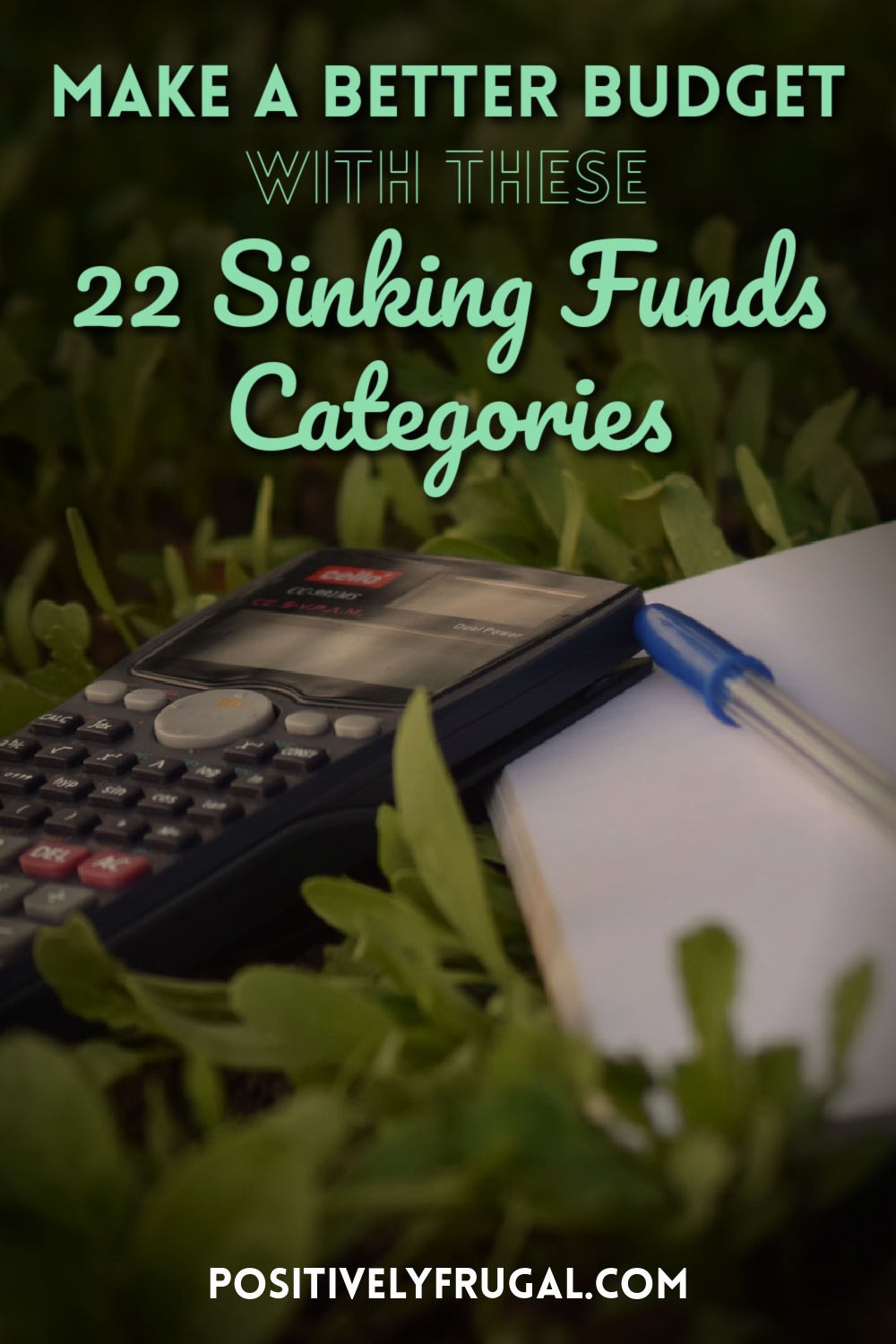
How To Budget Sinking Funds
It is fairly easy to understand how to balance a budget. You enter your income and deduct your expenses.
But when you create a Zero Balance Budget – the Dave Ramsey method in his book, The Total Money Makeover – then you spend every single cent you earn to get a zero balance.
How it works is like any other budget; you list your income and subtract your expenses. But in a Zero Sum Budget, your savings – your Sinking Funds – are listed in your budget as an expense.
Pro Tip: Check out my top Financial Books for Beginners!
Adding Sinking Funds to Your Budget
Just like your expenses, you add a line item for each Sinking Fund category into your budget as an expense – and pay a pre-determined monthly minimum into the savings fund.
You calculate your Sinking Funds by taking the amount of money you need and dividing that amount by the number of months until you need it.
Let’s say you want new tires that cost $600. You will need them in 6 months. To figure out how much you need to save each month, you divide 600 by 6, which is 100.
Alternatively, you can do the math with the monthly savings you are able to afford. If the tires cost $600, but you can only afford to save $100 per month, then take the total needed ($600) and divide it by the amount you can save ($100) to find out how many months it will take to reach your goal (6 months in this example).
On your budget, you add a line item of New Tires for an amount of $100. Each month for six months, you pay the $100 into the specified New Tire account. Now, you go to get new tires and you already have the cash to pay for them using Sinking Funds.
By adding Sinking Funds into your budget, you save over time and there are no surprises about what you can afford. Being intentional with both your savings and your spending, you design a crystal-clear picture of your financial future.
Is a Sinking Fund a Need or a Want?
Most budgets – including the worksheets in my Budget Bundle – separate Needs and Wants into two different sections. For budgeting, it is necessary to make a distinction between the two in order to see where you spend (so that you know where to cut if necessary).
Sinking Fund categories, however, can be either a Need or a Want. It is completely up to you to decide what to save for.
Personally, I think one of the best things about Sinking Funds is that you can set goals for things you want. Even if it takes years to achieve, you will continually see your funds grow until you eventually reach your goal.
That said, there is not always wiggle room in the budget. When you are on a tight budget, you can create categories of Sinking Funds that will cover the essentials.
Types of Sinking Funds
Before we jump into our list of Sinking Funds categories, let’s cover the three Sinking Funds types.
Long-Term Sinking Funds
When we talk about long-term Sinking Funds, we are talking about big goals that will likely take a year – or longer – to reach.
A once-in-a-lifetime luxury vacation and down payment on a house are two examples of a Sinking Fund that are long term.
Short-Term Sinking Funds
Short-term Sinking Funds are typically geared toward goals that can be reached in a relatively short amount of time – about 3 to 6 months.
New tires for your car and a Christmas Fund are two types of short-term Sinking Funds.
Revolving Sinking Funds
Sinking Funds that are revolving are funds that are continually replenished and depleted. They don’t have an end-date and it’s best if the balance never hits zero.
A Dining Out Fund and Car Upkeep Fund are two Revolving Sinking Funds examples.
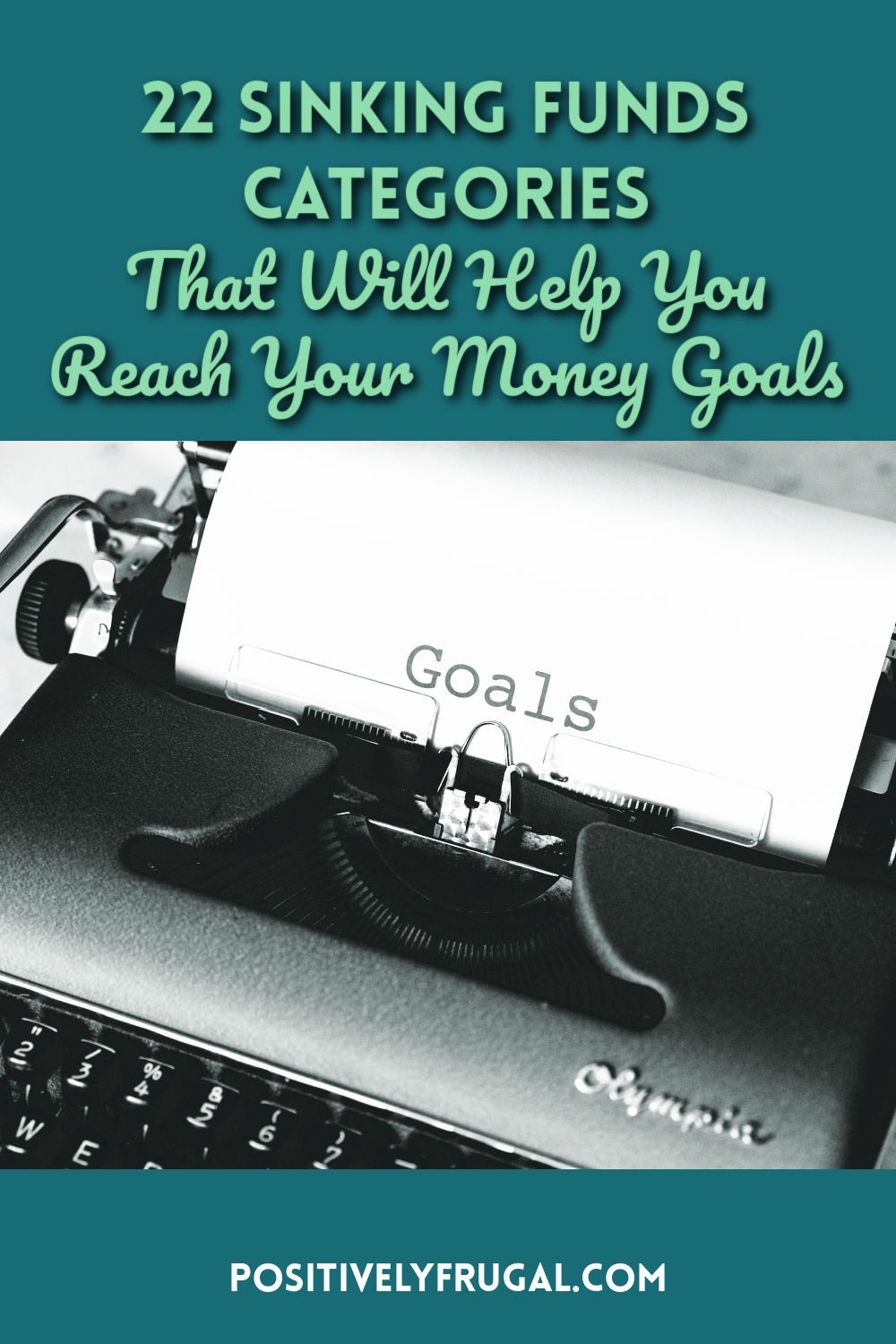
22 Top Sinking Funds Categories
Now that you have a better basic understanding of what Sinking Funds are and how they can help you be a better budgeter, let’s dive into our Categories of Sinkings Funds list!
These different Sinking Fund categories are some of the most popular things that people save money for – but keep in mind that you can use this method of saving for anything!
Additionally, if you have multiple savings goals, be sure to set up multiple sinking funds.
#1 Emergency Fund
An Emergency Fund is one of the most essential Sinking Funds that you can create. In fact, if you don’t already have an Emergency Fund, this should be the very first Sinking Fund that you set up!
An Emergency Fund is exactly what it sounds like: a fund for emergencies…and only for emergencies. It is your cushion to fall back on when something goes wrong – like if you lose a job or get in an accident.
A good rule of thumb is to save 3 to 6 months’ worth of expenses in an Emergency Fund. However, if you are just getting started with savings, aim for a goal of $1000.
Just bear in mind that the Sinking Fund money for your Emergency Fund is not to be spent when the goal is achieved. Some people might argue that your Emergency Cash is not a Sinking Fund at all. However, the method used for setting money aside – Goal divided by Time or Savings – is right in line with Sinking Funds.
I personally think setting up your Emergency Fund as a Sinking Fund is a good way to start saving money.
#2 Vacation Sinking Fund
I absolutely love Vacation Sinking Funds! There is nothing more fun to save up for than travel, in my opinion – which is why it ranks #2 on my Sinking Funds list.
You can use your Vacation Fund for a big trip abroad or quick weekend getaway. Personally, I like to save for a specific vacation destination – like a trip to the Caribbean. But some people create a revolving fund for frugal vacations that they continually dip into whenever they get the urge to travel.
#3 Wedding Sinking Fund
Sinking Funds are wonderful for weddings! A wedding is a huge, one-time expense that can be saved up for over a period of time. Using your wedding date and estimated costs, it’s easy to plug the info into the Sinking Fund formula.
With a designated wedding fund, you will be able to budget saving money down to every last dime of your nuptial expenses.
#4 Christmas Sinking Fund
Christmas is the most wonderful time of year…to go into debt! But, with a Sinking Fund for Christmas, you can make sure your Christmas is on Budget!
I think the best time to start putting money aside for the year’s Christmas is the day after last year’s Christmas. When you spend an entire year budgeting for the holidays, you will have no problem paying for presents.
While Christmas is usually the biggest holiday to pull off frugally, Halloween can be a frugal budget buster as well! Check out my advice for a Fun and Frugal Halloween!
#5 Sinking Fund for Car Maintenance
Car maintenance can cost a pretty penny – but you can always be one step ahead with a Car Repairs Sinking Fund.
Some of the expenses that can be paid with your fund are oil changes, brake replacement, new tires and car washes. Additionally, you can pay other car fees – like registration and car insurance – from your car account. Thinking about ditching the car altogether? Read my top tips for Alternative Transportation!
#6 Home Upkeep Sinking Fund
If you own a home, then you know that there are always things that pop up – like roof repair or a new lawn mower. For better budgeting, start a Home Fund that is ongoing.
Your Home Upkeep Fund will keep you from worrying about how you will pay for the next thing that needs fixed. It’s a Revolving Sinking Fund example.
#7 House Upgrades Fund
A House Upgrades Fund is a little bit more fun than the Upkeep Fund. While some people will mesh these two categories together, I think it is better to save for these two Sinking Fund ideas separately.
House Upgrades are Wants – not Needs – that enhance your comfort in your home. New furniture, new carpet, a better fridge or a new washer and dryer all fall into the House Upgrades Sinking Fund.
Keep in mind, however, that any one of those items could be saved for specifically in its own fund!
#8 New Home Sinking Fund
A new home is a huge expense – likely the single most expensive thing you will buy in your lifetime. Costs associated with buying a new house can really creep up on you – like the down payment, new furnishings and future lawn maintenance – but not if you are prepared and planned ahead with a New House Sinking Fund!
Moving out of your parents’ place and into an apartment? A Sinking Fund is a fantastic way to save up for your first and last month’s rent, kitchen appliances and renter’s insurance!
#9 Sinking Funds for Child Expenses
Kids cost a lot – but you can tackle impending expenses by starting a Sinking Fund specifically for your kids. This is one of the long-term Sinking Funds categories that is often overlooked.
Whether you want to save for something specific – like new clothes, braces or activities – or you just want to establish a general fund for all expenses related to children, with a designated account, you will be able to better budget for what they want and need.
#10 Back To School Fund
A Back To School Fund could be included with a general Kids Fund, but I think the exorbitant cost makes it one of the Sinking Fund examples that stands on its own.
The average American family with kids spends about $850 on Back-to-School expenses, according to the National Retail Federation. The average spent for Back-to-College costs are even more – at $1200.
Rather than being blindsided, save for these fees in advance with a Back To School Sinking Fund.
#11 Medical Expenses Sinking Funds
Medical expenses can be overwhelming – but not when you plan ahead with a Medical Sinking Fund! Although it is not one of the fun items on our Sinking Fund list, for many people it is a necessity.
Based on your previous year’s medical expenses, you can calculate about how much you will need to cover your insurance (if paid out of pocket), co-pays and prescriptions. If there is room in your budget, you could even add a little bit extra to cover any unexpected costs for tests and illnesses.
#12 Sinking Fund for Pet Care
Pets are not cheap, so budgeting for Pet Care is one of the top Sinking Funds ideas for pet owners.
With you Pet Care Fund, you can save for essentials like food, vet bills, medications and grooming. A revolving fund that you continually refill is best for pet care.
#13 Sinking Fund for Annual Subscriptions and Memberships
Yearly fees for memberships and subscriptions are exactly what Sinking Funds are for!
Don’t let your gym membership renewal or Amazon Prime subscription take you by surprise. Budget is as one of your savings categories so that you are ready when they come due.
#14 Eating Out Sinking Fund
Eating out can eat up a lot of your budget. In fact, when I was first changing my relationship with money, my Restaurant Budget was one of the many little luxuries that I cut.
When I got in control of my spending and started saving with intention, I realized I had room in my budget for the occasional meal out at a restaurant. I didn’t have to eradicate restaurants from my life; I just needed to be more responsible about how much I was spending eating out each month.
(Right here. THIS is what Sinking Funds are all about! When you create Budgeting Sinking Fund categories for things you want – like dining out – and save for them in advance, then you will less likely find yourself in a pinch where you have to eliminate eating out from your budget altogether.)
#15 Sinking Fund for College
Whoa. This is a big one. College costs are crazy expensive! Setting up a College Sinking Fund can help you keep you head above water and away from a lifetime of student loans.
Start a Sinking Funds budget for tuition, books, room and board, and spending money, too!
Oh – and if you do have college loans, you can set up a Sinking Fund so that you can start paying them off quicker. Use a Debt Tracker to stay motivated and aim to be debt free!
#16 Self-Employment Taxes Funds
If you are self-employed – even if it is just a part-time side hustle – you are required to pay taxes. In fact, self-employed people are required to make estimated quarterly payments throughout the year.
You can stay on top of what you owe and avoid penalties and fees when you budget and save with a specified savings account. Then, when taxes come due, you can use your already-saved Sinking Fund cash to pay them.
#17 Sinking Funds for Fashion and Clothes
Everyone needs to buy clothes. Even if you are practicing extreme frugality, you need to clothe yourself – which is why a Clothing Fund is one of the good examples of Sinking Funds categories.
Regardless of whether you are aiming to be fashionable or are just clothing yourself as affordably as possible, a Clothes Sinking Fund will help you best budget your wardrobe expenses.
#18 Entertainment Funds
Just like Vacation Funds, Entertainment Funds are fun funds to save for!
You can lump all of your entertainment savings into one account or save for specific events – like a concert, date nights or an amusement park – or, you can create a Sinking Fund budget line item for one big, specific entertainment cost.
As a side note, not all entertainment costs…you can use my list of Cheap and Free Activities to find fun and frugal things to do while you start growing your Entertainment Fund!
#19 Parties and Gifts Fund
Even if you are trying to be frugal, you don’t want to skip fun celebrations or snub gift giving traditions.
While learning how to entertain for cheap and give gifts on a budget can be key to keeping your spending in check, setting up a revolving Sinking Fund for events and gifts will greatly reduce your stress when the invite arrives in your inbox.
#20 Sinking Funds for Hobbies
Hobbies and collections can be costly – which discourages a lot of people from partaking in their favorite pastimes. Setting up an account for hobbies, however, is one of the best examples of Sinking Funds that allows frugal people to keep a balanced budget.
Start your Hobby Sinking Fund today so that you can confidently engage in a few of your favorite frugal things to do – guilt free!
#21 Beauty and Self Care Sinking Funds
Self-care and beauty regimes are quick to get cut when you are trying to manage a tight budget. It can be difficult to justify a weekly pedicure when you are struggling to pay off debt.
That said, while your beauty treatments may need to get nixed temporarily, by budgeting and building a fund over time, the pause will not be permanent.
#22 Donation and Charity Funds
Like all other money spent, charity donations should be a Sinking Fund line item in your budget.
Even if you save just $5 per month, at the end of the year you will have $60 to donate to your favorite charitable organization.
Sinking Funds are all about focusing on the future, budgeting your spending and saving for what you need and want!
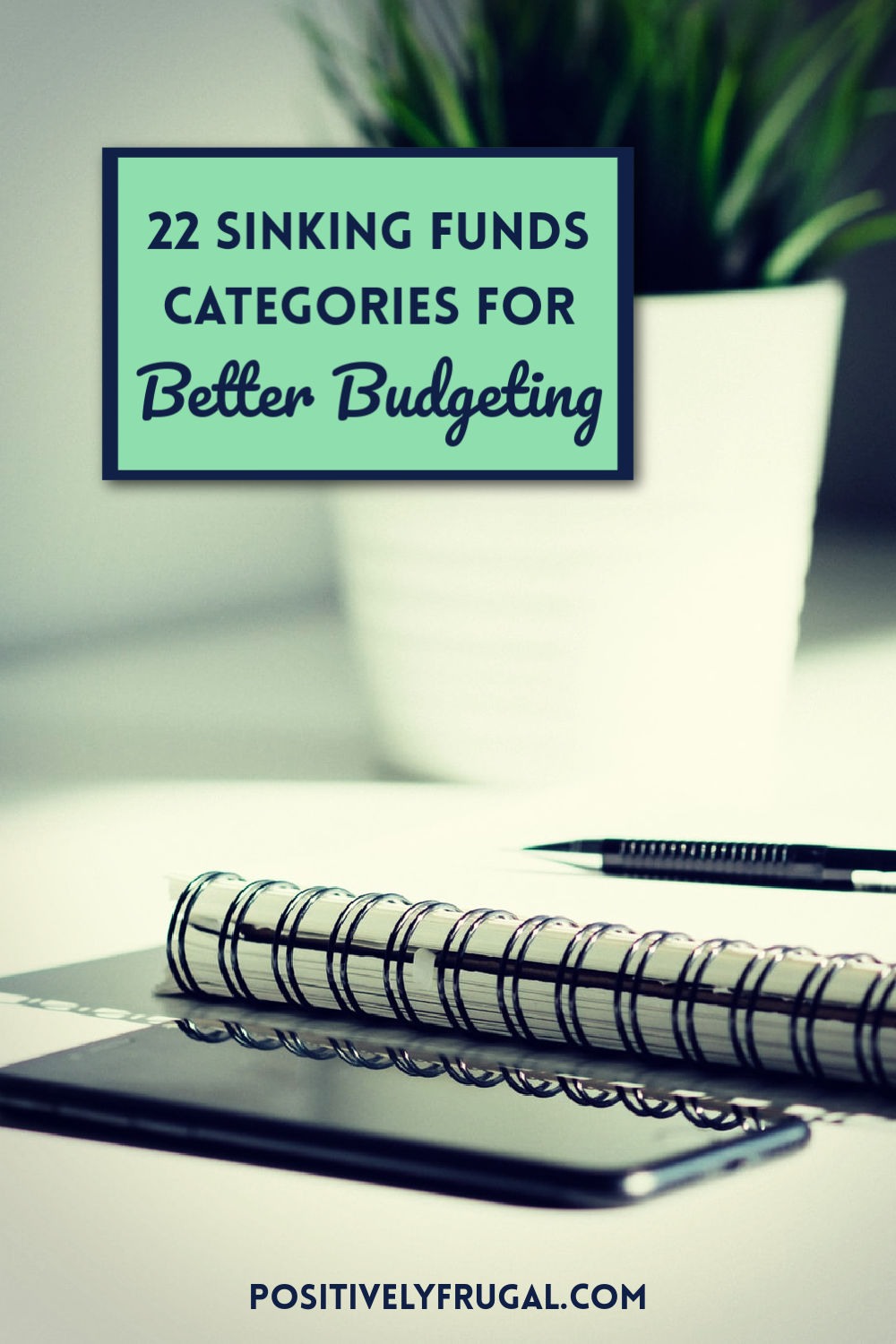
Can I Have Multiple Sinking Fund Categories in My Budget?
Yes, absolutely! Saving for multiple things simultaneously is a great way to get ahead and really take the reigns of your budget.
When you have numerous funds, it is best to set up individual savings accounts for each one. Keeping the money separate will help you keep better track of it and reduce your temptation to spend it on something else.
For more tips on how to manage money in your funds, read my article, What Are Sinking Funds?
I would caution, however, not to go overboard. Try to avoid getting too specific.
For example, when you set up your Vacation Fund, just leave it as one fund. Don’t break it down into separate savings for Plane Tickets, Accommodations and Tours; that’s too difficult to keep track of.
Instead, when you define your vacation goal, calculate the total cost of your trip and all anticipated expenses associated with it. Use that grand total as your target amount.
How Do I Track My Sinking Funds Categories?
To track each of your Sinking Funds categories, you could simply check your running balances…but that is kind of boring!
Tracking savings should be fun and help keep you motivated.
I think the best way to track your funds is with a fun budget worksheet that provides a visual representation of your accumulating cash.
There are hundreds of different styles of trackers that you can use to steadily watch your progress; you can even create your own.
That said, my Bundle of Savings Trackers includes useful and fun trackers for the most common Sinking Funds categories. You can use my trackers for everything from Christmas Funds to Pet Care – plus I even include a useful Sinking Funds spreadsheet for those who are more number oriented.
Sinking Funds Tracker: Free Printable
Just want something basic to keep your eye on the prize? My sinking funds worksheet PDF is perfect! The FREE Sinking Funds worksheet is ready to be downloaded so that you get started with your savings right away!

We Want To Know: What Sinking Fund categories do you save for? Share your top Sinking Fund category ideas in the comments below to help inspire fellow savers!
Interested in more of my Budget and Goal Tips? I round them all up on the Budget & Goals page!
